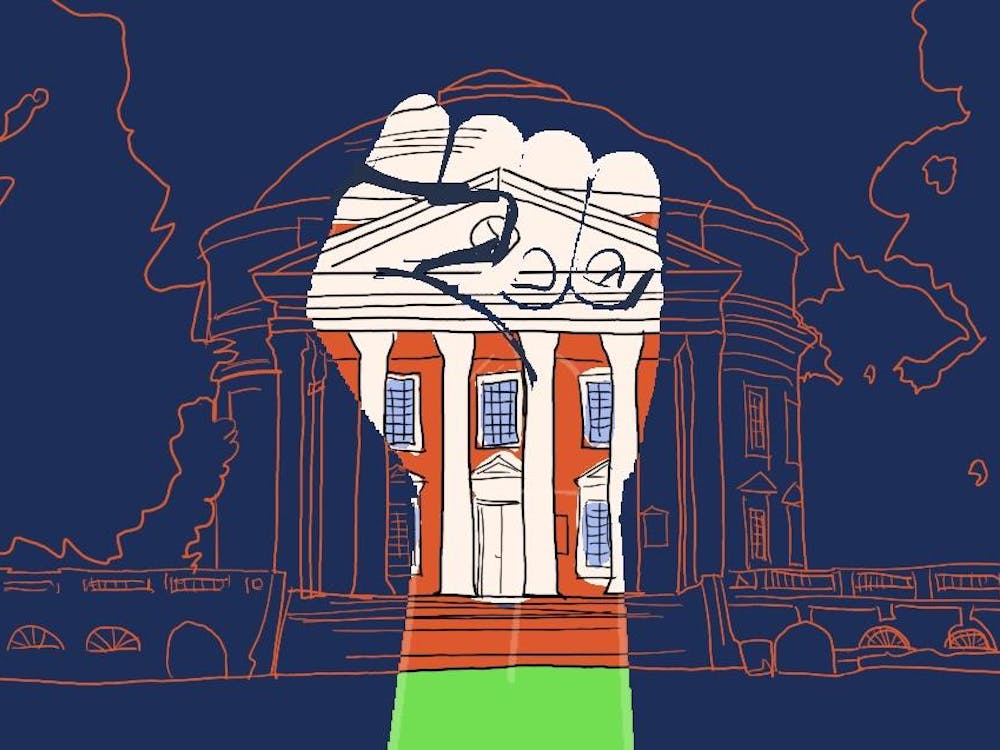DURING four hiring cycles, the "star" hires strategy (i.e., hiring members of the national academies or comparably distinguished scientists) has produced better than solid results. It has also underscored the urgency of the need for more and better research space. With special funding from the Board, we have attracted six extraordinary scientists, each of whom enriches the academic enterprise significantly.
Joseph Campbell in Engineering is an expert in integrated optics. Among other things, his research seeks or has generated more efficient ways to transfer data over fiber-optic networks for telephones, advances in night-vision technology, and development of tiny biological sensors that can monitor the presence of bioterrorism substances such as anthrax.
Stephen Rich in Public Health Sciences (Medicine) studies, among other topics, genetic predispositions to diabetes and its complications, with the ultimate purpose of preventing the disease.
John Yates in Chemistry (College and Graduate School) is one of the top surface chemists in the world. He studies global warming, solar cells, and chemical detectors.
Mark Yeager in Physiology (Medicine) studies the structural biology of membrane proteins with the goal of enabling researchers to see the structure of cell membranes and to develop drugs to fit specific structures.
Bernard and Christine Thisse in Cell Biology (Medicine), developmental biologists and geneticists who pioneered analysis of the genome of the zebrafish, apply their earlier work to understanding human birth defects, the formation of organs, and regenerative medicine.
Professors Campbell, Rich, Yeager, Yates, and the Thisses have relocated research groups and laboratories as they came here, or are doing that now. Together, they are expected to bring some $40 million in research funding new to us during the next three years. By any measure, growth of this kind matters to U.Va. and to Virginia.
The problem posed to the Board last week was how to grow more rapidly than we have -- to grow as rapidly as the best of our peer universities do, and particularly how to build and support both stars from other research centers and stars (at all academic levels and across all of the disciplines) who are already here. Put simply, we can recruit stars if we succeed in designing and building the facilities they need to maintain pace with competing universities and to achieve excellence in their work. The same strategy strengthens faculty members who are already here.
No one strategy (i.e., hire stars, build flexible and adaptive buildings, support graduate students) meets every need. Together, however, multiple strategies, including buildings that reach completion on time and within authorized prices and a comprehensive star strategy, can: that is the message from other universities that have done it. Hiring and cultivating stars will add value to any discipline. This is what all effective deans and department chairs strive to do. Delayed or missing facilities undercut excellence, especially so when so many competing universities deliver them on time.
Our options are changing now. What was impossible (or seemed so) in earlier years is possible now -- 2007 and 1999 or 2002 or 2004 are different eras so far as growing serious science is concerned. Prior to the Restructuring in 2005 and 2006, we lacked the state support and internal financial clout to build science facilities competitive with those built at Yale, Michigan, Berkeley, and, as we heard on Friday, at UNC-Chapel Hill and at Cornell during the last three to five years. Between Restructuring and our hard-won AAA bond ratings, we have financial options now (institutional bonding, strategic use of overheads intended for facilities, philanthropic giving, other generated income that is not restricted in use) that either did not exist previously or required complex, slow approvals. The years since the late 1990s have seen major advances in the design and pace of science construction, especially in the kinds of facilities that faculty members and students need for science in the College of Arts and Sciences, in Engineering, and in the basic sciences that support Medicine.
Our new provost, Dr. Tim Garson, is charged with moving us to the next level and revamping our plans to make them sufficiently, which is to say, realistically, comprehensive. At the same time, he and Leonard Sandridge are close to completing the work of the Planning Commission created last winter to complete the products of the Board of Visitors' Special Committee on Planning, chaired by John Wynne, the vice rector.
Political scientists and historians sometimes identify destiny moments when persons or institutions choose either to move dramatically forward or accept decline. People here have never accepted mediocrity as a standard. In good times and bad, we have worked together to achieve excellence despite financial constraints, sometimes ambivalent state support and appropriations, and the challenges of two decades of the most dynamic progress made in modern times in science. Broadening the plan; acknowledging that no one strategy is complete and sufficient to address hard and large problems; discovering better, timely ways to design and build superb buildings -- these are building blocks for the visions of faculty members who have sat together to strategize on how best to choose leaders, of the Board members and administrators and state officials who found how to make Restructuring a reality, and ultimately of our founder. Jefferson believed that all learning, all science, is useful. Reread the summary above of the work now done here by Professors Campbell, Rich, Yates, Yeager, and the Thisses. If anyone still doubts that science is useful, indeed essential, their work must surely change that view. Then imagine a university addressing "all the useful sciences," for our time and for the future. The work will be hard and demanding. The possibilities inspire awe.
Part one of University President John T. Casteen's two-part series on the sciences at the University appeared in yesterday's issue.






